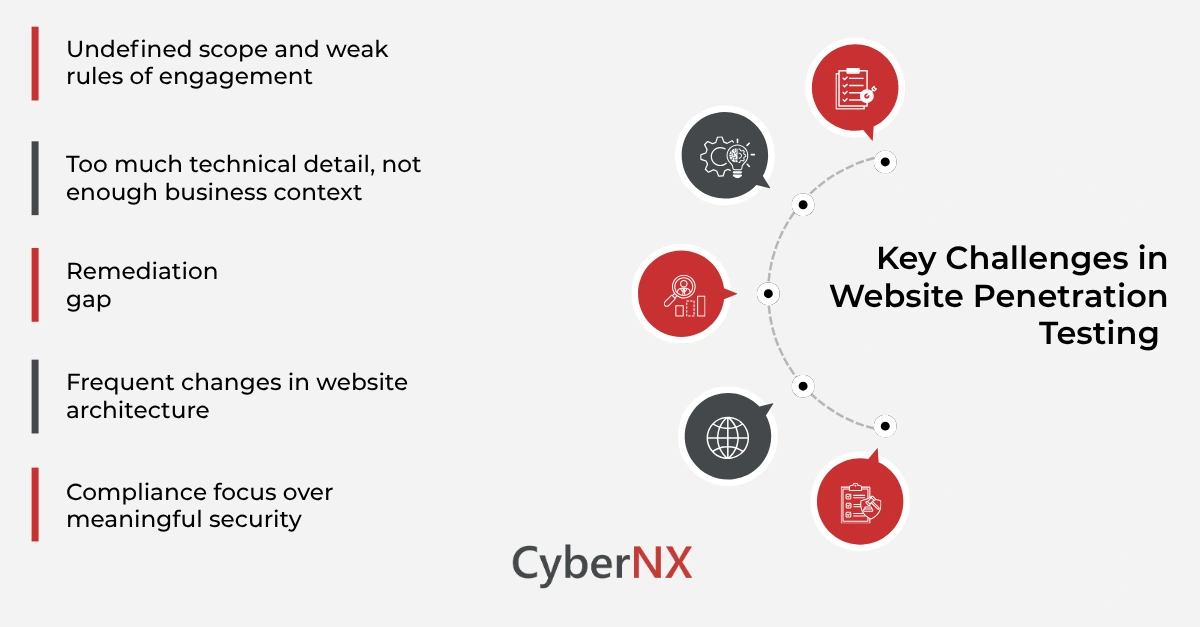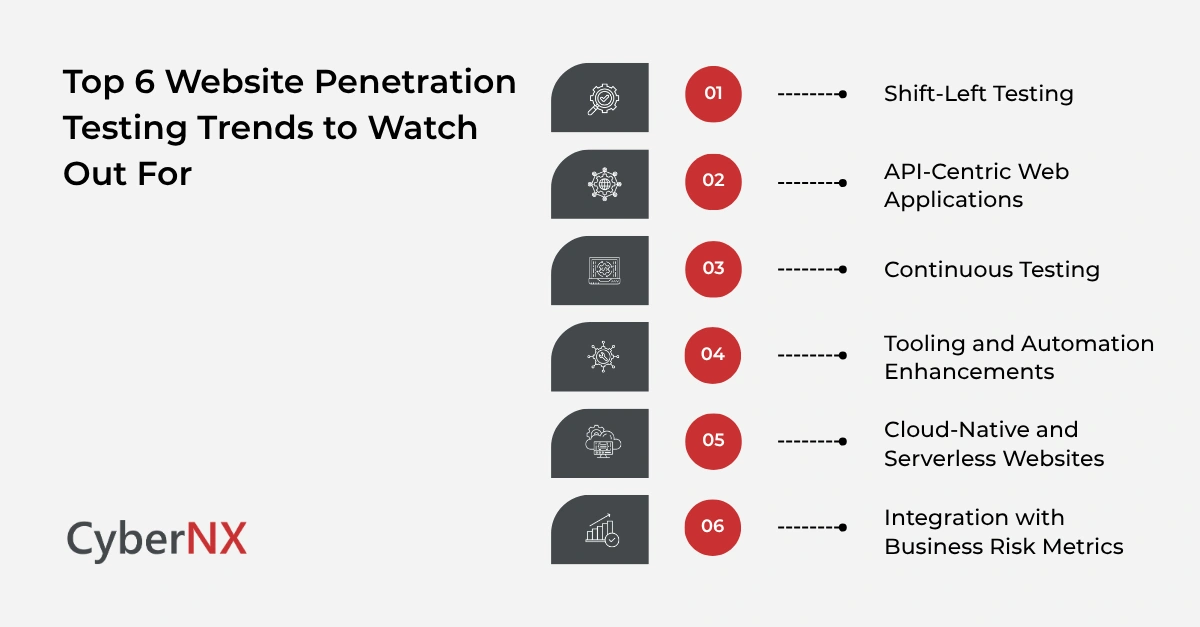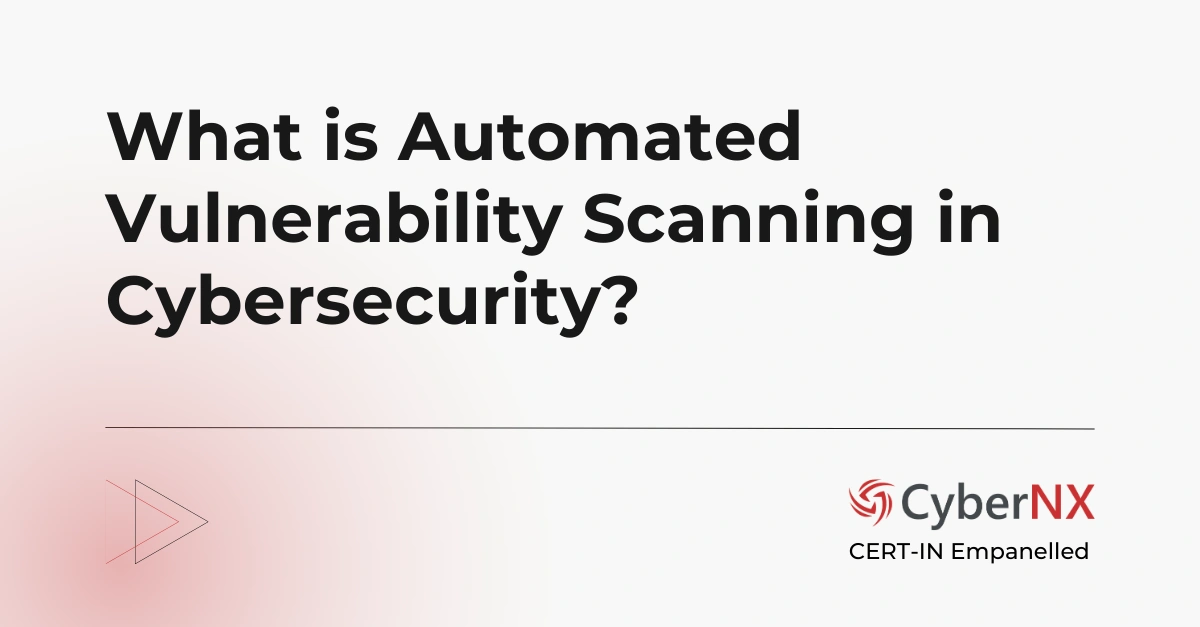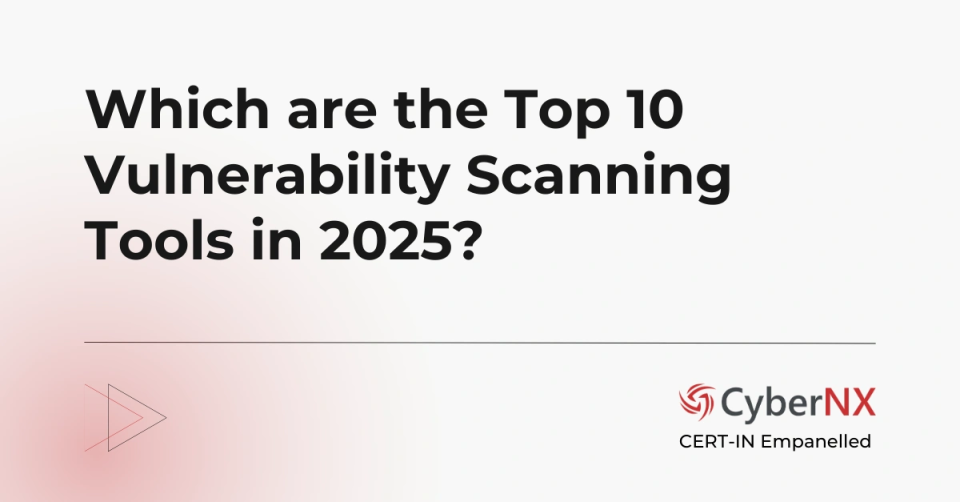Every organisation with a web presence faces evolving threats to its websites. With rising complexity, vulnerabilities slip in across applications, APIs, servers, and third-party integrations.
In this guide to Website Penetration Testing we explain how a structured test uncovers weak spots before attackers do. For CISOs, IT Heads and cybersecurity leaders, this means gaining clarity, reducing risk and making smart investment decisions.
What is website penetration testing?
Website penetration testing refers to a simulated, controlled attack on a website or web-application to identify security weaknesses. Unlike a vulnerability scan, which finds known issues, a penetration test tries to exploit weaknesses – mimicking how an attacker operates.
For example, the PCI Security Standards Council’s guidance distinguishes penetration testing from vulnerability scanning. They do this primarily by defining scanning as an automated process to identify known weaknesses while penetration testing as a manual, goal-oriented process that actively attempts to exploit those weaknesses to assess their real-world impact.
Why it matters:
- According to a survey by Core Security, 72% of organisations believe penetration testing prevented a breach.
- It provides insights that feed into your vulnerability management, risk and compliance programmes.
- For decision-makers, it translates technical weaknesses into business impact: lost revenue, reputational harm, regulatory fines.
Common hurdles organisations face
When we work with clients, we often see these recurring issues in website pentesting:
1. Undefined scope and weak rules of engagement
Without clear boundaries (which websites, which environments, what authentication) the test may miss critical assets or disrupt production systems.
2. Too much technical detail, not enough business context
If the final report is full of raw results and screenshots but lacks a clear summary for leadership, getting budget and action becomes harder.
3. Remediation gap
Finding vulnerabilities is one thing; fixing them is another. If remediation isn’t prioritised or aligned with business risk, the exercise loses value.
4. Frequent changes in website architecture
Web apps evolve rapidly; new modules, APIs, third-party services get added. If pen tests are infrequent, you’re testing stale architecture.
5. Compliance focus over meaningful security
Sometimes organisations do a test just to tick a compliance box rather than to improve security posture. While penetration testing compliance is helpful, it should not be the only driver.
How to conduct website penetration testing: methodology and phases
A structured approach helps ensure clarity, repeatability and meaningful results. We split the methodology into five key phases:
1. Planning & reconnaissance phase
Before any test begins, clarify the objective, scope, timeline and rules of engagement. Include which websites/applications are in scope, which accounts (e.g., authenticated vs unauthenticated), whether APIs/back-end will be included.
Gather publicly available information: domain registrations, DNS, subdomains, technology stack, SSL certifications.
2. Scanning & enumeration phase
Here we map the attack surface: directories, files, endpoints, parameters, content management systems, third-party libraries, old versions. Tools and manual methods are used together. AI-techniques are also now used for structure discovery. The objective is to find login portals, API endpoints, third-party integrations, legacy functionality.
3.Exploitation phase
Now we attempt to exploit vulnerabilities found – e.g., SQL injection, XSS, broken access controls, insecure file uploads, unprotected APIs. We look for ways to gain elevated access, exfiltrate data or pivot further by applying manual methods, automated tools or custom scripting.
4. Post-exploitation & pivoting
Once access is gained, we explore how an attacker could move laterally, escalate privileges or access sensitive data. For web applications this might include impersonating users, accessing admin consoles, extracting configuration files or credentials.
5. Reporting & remediation
This is where the findings are documented and communicated to both technical and business audiences. A good report contains:
- Executive summary (for leadership).
- Scope and methodology details.
- Prioritised findings with severity, business impact, reproduction steps, proof screenshots or logs.
- Clear remediation recommendations.
- Appendices for full technical details, evidence, tools used.
Tip: Effective penetration testing report helps get buy-in from stakeholders.
Key benefits of website penetration testing
When executed properly, you gain several advantages:
- Risk reduction: You learn your most significant vulnerabilities before attackers do.
- Compliance and assurance: Pentest help demonstrate to regulators, auditors and board-members that your web-assets are being proactively reviewed.
- Budget justification and prioritisation: A good test highlights where the business should invest (for example, a high-impact vulnerability in a public-facing API).
- Strengthened security culture: It drives collaboration between developers, operations and security teams—and helps embed secure development and deployment practices.
- Better incident readiness: If you know your gaps, you can prepare mitigations and response plans.
Trends IT leaders should watch out for
Here are some of the latest directions in website penetration testing relevant for IT Heads and CISOs:
- Shift-left testing: More testing earlier in the development lifecycle (DevSecOps) so issues are caught before deployment.
- API-centric web applications: Many websites now operate via APIs and microservices; your pen test must cover those.
- Continuous testing: Rather than a once-a-year engagement, many organisations are moving toward ongoing assessments or red-teaming cycles. Core Security’s survey noted a growing number of organisations treating pen testing as part of their vulnerability management.
- Tooling and automation enhancements: Things like AI-assisted scanning or structure mapping (as in the academic study) are gaining traction.
- Cloud-native and serverless websites: Testing must go beyond “traditional” monolithic apps to modern architectures – decision-makers must ensure their testing vendor or internal team understands this.
- Integration with business risk metrics: Good reports increasingly tie vulnerabilities to business-impact, not just technical severity.
How to choose a testing partner (or build an internal capability)
For leaders deciding between an external vendor or in-house team, here are key questions:
- Do they clearly define the scope, rules of engagement and deliverables?
- Can they test your web applications + APIs + third-party dependencies (not just network checks)?
- Do they provide actionable remediation guidance, not just a list of issues?
- Will they help you prioritise business-impact, not only technical severity?
- Do they support an outcome-oriented approach (e.g., improved resilience, reduced time-to-remediate) rather than just a one-off report?
- If you build in-house, ensure you have skilled staff, the right tools, and a process that aligns with your business cadence.
Conclusion
Website penetration testing is a strategic part of a modern security programme. It goes beyond ticking a compliance box. When done correctly, it helps you uncover real-world weaknesses, prioritise what matters most and allocate resources wisely. Either you can build an internal team or take expert help to execute these tests, interpret the results in your business context, and help you fix the gaps.
If you’re ready to take the next step, contact us today to schedule your website penetration testing engagement. We will map your web-asset risks and build a practical plan to secure your online presence.
Website penetration testing FAQs
How often should an organisation perform website penetration testing?
It depends on changes to the website/application, risk exposure and compliance requirements. At minimum once a year, more often if you have frequent updates, integrations, or handling sensitive data.
Does website penetration testing replace regular vulnerability scanning?
No. Vulnerability scanning is automated and finds known issues. Website penetration testing is manual (and semi-automated) and tries to exploit vulnerabilities. They complement each other.
What does a website penetration testing report look like?
A good report includes an executive summary, scope/methodology, key findings with severity and business impact, detailed technical evidence, remediation guidance and appendices.
Who should be involved in a penetration testing engagement?
Typically: security lead (CISO/IT Head), application owner/development team, operations/devops team and the testing vendor or internal testers. Clear roles and communication matter.







